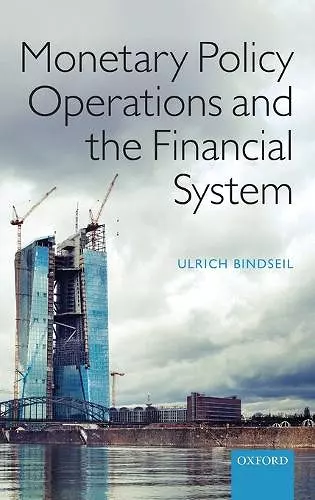Monetary Policy Operations and the Financial System
Format:Hardback
Publisher:Oxford University Press
Published:11th Sep '14
Currently unavailable, and unfortunately no date known when it will be back

Since 2007, central banks of industrialized countries have counteracted financial instability, recession, and deflationary risks with unprecedented monetary policy operations. While generally regarded as successful, these measures also led to an exceptional increase in the size of central bank balance sheets. The book first introduces the subject by explaining monetary policy operations in normal times, including the key instruments (open market operations, standing facilities, reserve requirements, and the collateral framework). Second, the book reviews the basic mechanics of financial crises as they have hit economies many times. The book then explains what central banks need to do to when financial markets and banks are impaired to fulfil their monetary policy and financial stability mandates. Besides demonstrating the need for non-conventional monetary policy measures, the book also highlights their dangers, such as moral hazard and increased central bank risk taking. The book draws a number of lessons from the crisis on non-conventional monetary policy operations, assessing what measures have worked well, and how a framework should be designed in future normal times such as to contribute to make financial crises less likely. Central bank monetary policy operations have traditionally been considered as a matter of practice, while the macroeconomic modelling of the transmission mechanism of monetary policy is regarded as a discipline relying on substantial theory ('monetary economics'). However, monetary policy operations can equally benefit from a theory, and from a normative framework to guide policy choices. The limited interest that monetary policy operations have found for many decades in academic economics may well have contributed to the many misunderstandings on central bank actions over recent years. This book provides a basis for a better theoretical understanding of real-world monetary policy operations.
The financial crisis and its aftermath have highlighted the importance of understanding how central banks operate, that is, how they use their balance sheets and other tools to implement monetary policy decisions. This book offers a unique and detailed view of the structure, history, and impact of monetary policy operations, both in normal times and in times of crisis. Written by a leading expert and experienced central banker, it is essential reading for policy makers, practitioners, and academics alike. * Todd Keister, Professor of Economics, Rutgers, The State University of New Jersey *
For a long time, monetary policy operations used to be a rather boring subject. But since 2007, central banks worldwide had to engage in a wide range of unconventional policy measures which are hard to understand and evaluate for non-experts. Written by the person in charge of monetary policy operations at the ECB, this book provides an excellent account of the conduct of monetary policy during times of crises. It introduces the basic theoretical models needed to understand the driving forces behind liquidity crises and outlines adequate policy responses. At the same time, it carefully addresses the risks involved in these measures. The interaction between monetary policy and financial stability being of key relevance for the next decades, this book comes just at the right time. It provides invaluable insights both in the theory and the practice of non-conventional monetary policy. * Gerhard Illing, Professor at LMU University of Munich *
Any monetary economist, central banker, or central bank watcher should read this. If only a treatise like this had been available when I joined the Monetary Policy Committee of the Bank of England: rigorous, aware of historical and institutional realities, and directly and operationally policy-relevant. * Willem H. Buiter, Ph.D., Global Chief Economist, Citi *
Ulrich Bindseil's book provides a consistent framework to understand central bank action, including the related trade-offs and dilemmas. It is both principle-based and deeply rooted in the ECB experience in the European crisis. It is a must read for central bankers, in sunny and in rainy days. * Benoit Coeuré, member of the Executive Board of the European Central Bank *
ISBN: 9780198716907
Dimensions: 240mm x 173mm x 26mm
Weight: 654g
338 pages